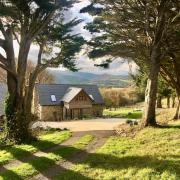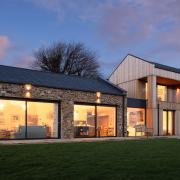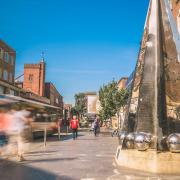Catherine Courtenay talks to photographer Jason Ingram who reveals some of his favourite Devon garden shots

Gardeners don’t need to be shown how the quality of light creates a changing landscape. They will be sensitive to subtle transformations which occur throughout the day, from the glimmering light of dawn to the intense colours created by a mellow evening sun.
One person who knows more than most about garden light is award-winning photographer Jason Ingram. He works all over the world taking photographs of gardens and has visited many in Devon – although you’d probably never see him, as he tends to take his shots at dawn or dusk when most of us are either waking up or retreating into our homes.

He trained at Salisbury Art College, graduating in 1992 at a time when garden photography was a sideline activity.
“It was a different time then. We’d stay in the studio a lot because the tutors wanted us to work in the commercial world. Landscape photography wasn’t seen as a way of making a living, but I desperately wanted to work outside all the time.”
Encouraged by Charlie Waite, another former Salisbury student who went on to become a successful landscape photogprapher, Jason started to do some work for the National Trust and from there his gardens work evolved.

He describes his success as: “Being able to see the narrative in a garden, so I could tell its story.”
Jason’s own interest in plants and gardening grew from his photographic experience. “I’ve got a very good knowledge of plants now and I’ve worked with lot of very good designers so I know what to look out for in gardens. I can walk into a garden and know how to read it, the elements that make it work and why it’s planted in a particular way.”
“It’s a long hard slog though; you’ve got to want to do it,” he adds. “Being a garden photographer involves many hours travelling, often making repeat visits to a site if the photos aren’t quite right. And you have to be a keen meteorologist as well.”

Born in Kent, he moved to Somerset where his parents lived and went to school in Wellington. Now based in Bristol, he will be returning to Devon this year to teach garden photography courses at Otter Farm.
“I often get people asking: ‘How do you get those colours?’ It’s all based on good light; if you don’t have that nothing else works. So you’ve got to be there very early or very late; if the sun’s been up for three hours in summer it’s too late. Anyone can take a picture and change it, but you can’t change the quality of light.”
Garden photography is becoming increasingly popular and competitive and it’s important to keep up with gardening styles, he says. “Gardens are having a renaissance and there are lots of different things going on.
“I always remember my tutor who said: ‘You’re only as good as your last job.’ You have to strive to do things as best you can so, if I need to go back to a garden because the light isn’t right, then I do.” jasoningram.co.uk
You can buy limited edition prints at jasoningramprints.co.uk
Ten tips for better garden photography
1 Take your images either at first light or dusk; you can even shoot about an hour before the sun has risen or after the sun has set. No amount of Photoshop work can ever replace good light.
2 Try shooting directly into the sun or even slightly backlighting your subject; plants and gardens always look better when backlit.
3 Use a tripod if you are doing views of the garden and need to have everything sharp. It will slow you down and help you consider your composition more critically.
4 When checking the weather always look for wind speed. Wind is a real problem, especially when taking plant portraits.
5 Try to get down to the same height as the plant you are photographing. This may mean having a kneeling pad to hand for comfort - I never travel without one.
6 Look for the best composition. Try to position your plant, border or view off centre. This is known as the rule of thirds.
7 Make a note of the plants you are photographing or take a photograph of the label first so you know the plant name for captioning.
8 Try taking lots of different angles within the same composition, really explore it. Digital is cheap so use it to your advantage.
9 Always make sure you have a spare memory card and battery.
10 Overcast light can be used for plant portraits, in fact it is often better. Never photograph in harsh sunshine.


























